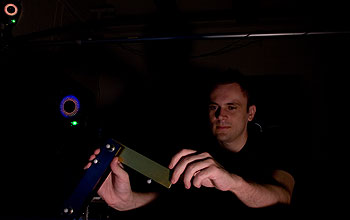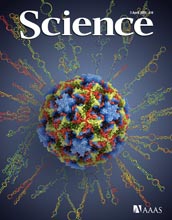All Images
News Release 09-057
Researchers Wanted: Humans Need Not Apply?
As the world drowns in data, researchers are embracing automation and raising questions about its impact on science.
This material is available primarily for archival purposes. Telephone numbers or other contact information may be out of date; please see current contact information at media contacts.

Cornell University doctoral student Michael Schmidt makes adjustments to an automated research system. Using the digital mind that guides a self-repairing robot, Hod Lipson, a researcher at Cornell, and Schmidt have created a computer program that uses raw observational data to tease out fundamental physical laws. The breakthrough may aid the discovery of new scientific truths, particularly for biological systems that have, until now, eluded detection. Such automation in scientific research is becoming more common, raising questions about its impact on science.
Credit: Jonathan Hiller, Cornell University
Download the high-resolution JPG version of the image. (450 KB)
Use your mouse to right-click (Mac users may need to Ctrl-click) the link above and choose the option that will save the file or target to your computer.
As science fiction plot lines go, the unintended consequences of yielding tasks too complicated or dangerous for human hands to computers and robots is a popular one. Yet in a perspectives piece in the April 3, 2009 edition of the journal Science, David Waltz of Columbia University and Bruce G. Buchanan of the University of Pittsburgh describe how real life scientists are increasingly doing just that, creating automated systems and devices that can not only help collect, organize and analyze scientific data, but that are also able to intelligently and independently draw up new hypotheses and approaches to research based on the data they receive. They see this all as a promising trend, but caution that researchers need to consider what tasks are best suited for automation and which should be left to the human mind. Here Waltz talks about the essay and the future of automation in science.
Credit: Columbia University and National Science Foundation

The perspective piece by David Waltz and Bruce G. Buchanan on automation in science appears in the April 3, 2009 edition of the journal Science.
Credit: Copyright AAAS, 2009
Download the high-resolution JPG version of the image. (1.2 MB)
Use your mouse to right-click (Mac users may need to Ctrl-click) the link above and choose the option that will save the file or target to your computer.


